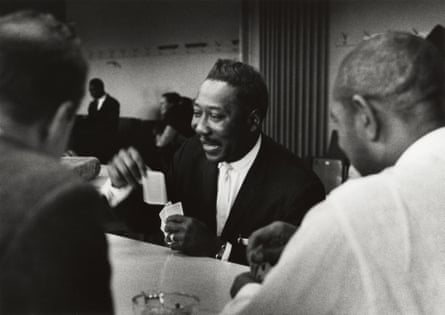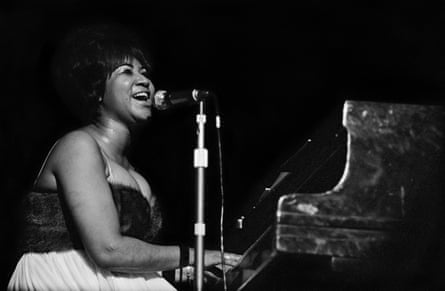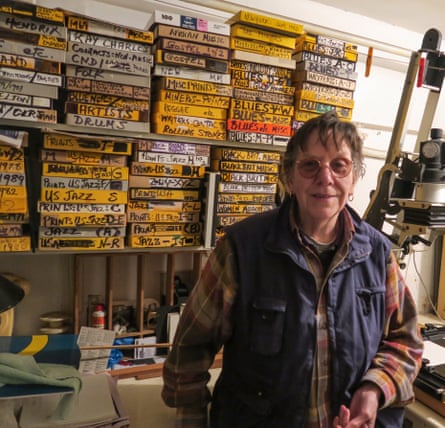S
In 1963, the photographer took pictures of the Beatles and was impressed by their intelligence and charm. Shortly after, she also photographed Bob Dylan, who was still in his 20s at the time. She recalls being the only photographer at his concert. In 1967, she had the opportunity to photograph Jimi Hendrix, and even gave him a ride in her car. She remembers him as a kind and gentle person.
It is unexpected that Wilmer had a different opinion about the performances despite the fact that many people would have loved to attend them. She confesses that she did not stay for Jimi’s performance at the Royal Albert Hall, even though he was a great guitarist. She wasn’t very interested in rock music and most likely went to Ronnie Scott’s instead. Interestingly, she does mention that when she interviewed Jimi, they discussed blues and he valued her strong connection to the genre.
At the age of 17, Wilmer’s entrance into the field of journalism was driven by her deep and growing love for African American music. She recalls, “If a magazine printed the address of any American musician, I would write to them! I reached out to Jesse Fuller and he responded, which led to a correspondence and my first published piece based on his insights.”

The article appeared in Jazz Journal and Wilmer quickly began contributing to other publications and regularly interacting with prominent African American musicians. “Overall,” she recalls, “everyone I encountered was kind and supportive. Sister Rosetta Tharpe even gifted me two pairs of her earrings! She was incredibly warm and friendly.”
Some people were not as pleasant. Fela Kuti, whom Wilmer became acquainted with during her six-week stay in Nigeria, was especially ill-tempered. “And he was always strolling around in his underwear,” she recalls. “Who wears underwear around others? He was quite authoritarian. Not very personable.”
Miles Davis, too, wasn’t exactly endearing. She remembers approaching the jazz great for an interview after photographing a gig, only for him to decline in a gruff voice. “His female partner said, ‘Go on, talk to the girl.’ And he replied, ‘I might have if she’d lifted up her skirt.’ Very Miles.”

Throughout her life, Wilmer has been influenced by blues, jazz, and gospel music. Now at 81 years old, she remains a powerful presence and has had a busy year. One of her recent accomplishments is the release of a new photobook, Deep Blues, which features a striking collection of African American blues musicians and their communities. This book coincides with the opening of the exhibition Blue Moments, Black Sounds at the Worldly Wicked & Wise gallery in London. Wilmer jokes that it has come at the perfect time to help her cover her winter fuel bills.
Wilmer has been a prominent figure in discussing music, race, women’s rights, minority groups, and cultural changes. However, she has stopped taking photos due to the hassle of carrying equipment. She continues to write for Jazzwise magazine. Wilmer was born in Yorkshire in 1941 and was raised by her mother in London after her father’s passing when she was six years old. At a young age of barely thirteen, she captured her first performer’s portrait with her mother’s Box Brownie camera in 1956.
Wilmer, who currently resides in London, remembers, “I had the opportunity to attend a Louis Armstrong concert at Earls Court. It deepened my love for jazz and my mother kindly supported my interests. When I found out which airport he would be departing from, I asked if we could go see him off. To my delight, he was there! I asked for permission to take his photo, and that marked the beginning of my journey.”
In 1964, the publication Flamingo, based in London, sent her on a six-week trip to the Gambia, Nigeria, Liberia, and Sierra Leone. During this time, she wrote about a variety of topics. However, it was later revealed that Flamingo, which was popular in the US, Caribbean, and West Africa, was actually funded by MI6. Wilmer quickly clarifies that her work for the magazine was not influenced by any hidden motives.

If Wilmer had a purpose, it was to document the work and leisure of Black musicians. Her photographs, whether taken during performances or behind the scenes playing poker, are expertly arranged yet remain authentic. She refrains from posing her subjects, allowing their true characters to come through.
Out of all the musicians I took photos of, she recalls that BB King was the most pleasant. On one occasion, while in New York, he invited my friend and I to join him on his bus as he headed out of town for a performance. When we returned late that night, BB insisted on us joining him for dinner at his home – he even woke up one of his daughters and asked her to fry some chicken for us! He then offered to cover our cab fare, but I refused, telling him that he had already done enough for us. He was not only kind, but also intelligent and generous – a true role model as both a musician and a human being.
In 1970, Wilmer published her first book, Jazz People. A year later, the V&A approached her about an exhibition. Wilmer believed she needed more powerful images, so she traveled to the southern United States and then spent five weeks with Ornette Coleman in New York. The outcome was the 1973 exhibition Jazz Seen: The Face of Black Music. Recently, the museum celebrated the exhibition’s 50th anniversary by featuring a photo taken by Wilmer of American gospel singers Inez Andrews and Elaine Davis in their show Energy: Sparks from the Collection.
Ignore the newsletter advertisement.
after newsletter promotion
In the past, the type of music that Wilmer supported was considered to be specialized. In 1977, her publication, “As Serious As Your Life,” was the initial record of America’s growing free jazz culture, focusing on the work of Sun Ra, an Afrofuturist and cosmic explorer whom Wilmer was familiar with.
She describes Sun Ra as having a strong following, almost like a cult. He had a group of young male musicians who lived with him and followed his instructions. It was an unusual dynamic, but Sun Ra was friendly and easy to talk to. He had a flair for the dramatic and if he saw her with a camera, he would make sure to put on one of his shiny hats. He always wanted to present himself in a certain way.
In the present day, the deceased nonconformist is revered as a symbol of hipster culture, and his band, the Arkestra, attracts a large, young following. “I am amazed by the current excitement surrounding his music, but jazz has changed so much in terms of how people appreciate it.”

Wilmer, a lesbian feminist, actively participated in activism during the 1970s and 80s. Along with Maggie Murray, she established Format in 1983, an agency dedicated to showcasing photography by women. This work is currently being recognized at the Re/Sisters exhibition at the Barbican and the Women in Revolt! show at Tate Britain. However, Wilmer eventually grew weary of participating in protests. She explains, “I became exhausted from being constantly targeted by the police and others.”
The exhibit, “Blue Moments, Black Sounds,” features over 50 photographs capturing musicians and their communities. These photos are considered some of the best ever taken of musicians, and Wilmer takes great pride in both the photos and the relationships she formed while taking them. She fondly remembers John Coltrane, describing him as a kind and modest man.
Unfortunately, Wilmer also witnessed the darker side of other musicians, not just Miles Davis. In her autobiography Mama Said There’d Be Days Like This, published in 1989, she shares her numerous challenges, such as being a victim of attempted sexual assault by a well-known jazz trumpeter backstage. Although she stood up for herself and physically defended herself against her attacker, Wilmer chooses not to speak about the incident now and his photo is not included in any of her current exhibitions.
She declares, “I have met numerous amazing individuals and can easily overlook those who challenged me.”
-
Café Royal Books is the publisher of Deep Blues. The exhibit Blue Moments, Black Sounds can be seen at Worldly Wicked & Wise in London until November 30th.
Source: theguardian.com


